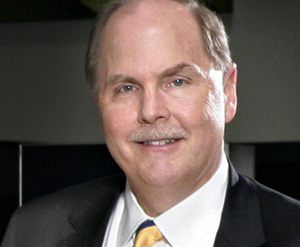
General Motors Corp. wins approval to sell its best-performing assets to a new organization named General Motors Co. and majority-owned by the U.S. Treasury, but some of its toughest work may still lie ahead.
The sale is expected to close Thursday, one day ahead of the July 10 deadline imposed by the federal government.
If GM does not clear up the sale by then, it will lose more than $30 billion in government restructuring support and go into liquidation, Obama Admin. officials threatened last week during the auto maker’s Chapter 11 hearings.
GM characterizes the approval of the sale, handed down by Judge Robert E. Gerber of the U.S. Bankruptcy Court for the Southern District of New York, as “another milestone in its reinvention.”
“This has been an especially challenging period, and we’ve had to make very difficult decisions to address some of the issues that have plagued our business for decades,” GM President and CEO Fritz Henderson says in a statement released earlier today.
“Now it’s our responsibility to fix this business and place the company on a clear path to success without delay.”
Erich Merkel, president of Autoconomy LLC, an automotive analytics firm in Grand Rapids, MI, says the new GM’s top tasks are stabilizing its declining market share, bolstering its weakened product development and repairing a dented image.
“There’s going to be a lot of work to do at GM,” he tells Ward’s. “They’ll continue to lose market share in the coming months, that’s expected. But it’s important they at least stabilize their share soon.
“They have some great products out there now – the Chevy Equinox, the Buick LaCrosse, and everyone knows the Chevy Camaro is doing well. But this is a what-have you-done-for-me-lately marketplace, and your product development will determine if you win.”

GM shelved a number of new-vehicle plans as it pinched pennies last year ahead of the government loans, including two hybrid programs and a 2-door version of the Cadillac CTS Sports sedan.
Also by the end of the year, the auto maker will cut loose its Saturn, Hummer and Saab divisions, as well as kill Pontiac. The “new GM” will go forward with Chevrolet, Cadillac, Buick and GMC.
The auto maker also will continue to eliminate thousands of white-collar jobs, close factories at the expense of even more blue-collar positions and sharply reduce its network of dealers.
That will leave GM with the daunting task of repairing its public image, an ongoing effort initiated many years prior to its bankruptcy with limited success.
“The Detroit Three have always had a public perception problem,” Merkel says. “And this bankruptcy certainly doesn’t help. You’re going to see a lot more public image campaigns in the future.”
GM says in its announcement today it expects to emerge from bankruptcy with a stronger balance sheet, which combined with a lower breakeven point in North America allows it to reduce risk, operate profitably at much lower sales levels and reinvest in the key areas of advanced technology and product development.
The auto maker also says its subsidiaries outside the U.S., which were not included in the historic Chapter 11 filing, will be acquired by the new company and expects those operations to continue without interruption.
The U.S Treasury will own 60.8% of the new GM, while the United Auto Workers union retiree health-care trust takes a 17.5% stake and the governments of Canada and Ontario will own a combined 11.7%. The old GM, which comprises bondholders of the former company, retains a 10% stake.
The new GM will remain headquartered in Detroit, led by Henderson in his present role, with former AT&T boss Edward E. Whitacre Jr. as chairman of the board of directors.
The remainder of the new GM board will include former auto industry analyst Stephen Girsky on behalf of the UAW trust and six existing members – Erroll Davis, Neville Isdell, Kent Kresa, Philip Laskawy, Kathryn Marinello and Henderson.
A representative for the Canadian government, as well as four additional board members appointed by the Treasury, will be announced later.
The old GM will remain in bankruptcy, change its name to Motors Liquidation Co. and wind down assets not carried forward to the new company. Al Koch, GM’s chief restructuring officer and former managing director of the turnaround firm AlixPartners in Southfield, MI, will oversee the liquidation.
Most experts did not expect GM to emerge as quickly from bankruptcy as its cross-town rival, Chrysler Group LLC, given its much larger and more complex organization, as well as sharp critics in Congress angry over taxpayer loans to foundering auto makers.
Some analysts suggest appeals are likely by opponents complaining GM’s fast emergence from bankruptcy is unfair to unsecured creditors.
But backed by the federal government and fanned by fears a GM liquidation would send the nation’s fragile economy from recession into deep depression, it appears the auto maker will speed through Chapter 11 in a swift 39 days.



